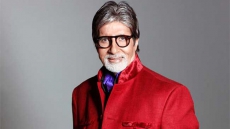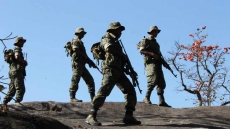The Supreme Court on Wednesday told the Muslim parties that Hindus may have attached divinity to the central dome at the disputed structure in Ayodhya, and that they prayed to it.
The Hindu belief was that Lord Ram was born on the 'Chabutra' (platform) in the outer courtyard. On the contrary, Hindus parties claim that Lord Ram was born in the inner courtyard located within the central dome, and that it is located 40 feet from the outer courtyard.
A Constitution bench comprising five judges and headed by Chief Justice Ranjan Gogoi is conducting the daily hearing on the matter.
Justice D.Y. Chandrachud, one of the judges on the bench, queried senior advocate Rajeev Dhavan, who represents Sunni Central Waqf Board and other Muslim parties, "Maybe Ram Chabutra was a creation of 1855 and that it coincides with the setting up of a railing (which prohibited the entry into the inner courtyard). Why was Ram Chabutra set up in the close proximity of the railing? Hindus believed some divinity in the central dome and this is the reason they were praying at the railing."
Dhavan equated this observation from the judge as "conjecture". The judge replied that he is referring to a scenario in 1885, when in a suit it was decided that Muslims were praying inside in the Masjid and Hindus were praying outside at the 'Chabutra'.
Dhavan replied that the whole area was walled. Justice S.A. Bobde re-inquired whether the whole area was walled. Dhavan insisted that "we cannot assume a situation existing before 1855. At this, Justice Ashok Bhushan, another judge on the bench, quipped that witnesses have said that Hindus were used to go inside (in the inner courtyard) to pray". Dhavan did not relent, instead in a strong tone replied that witnesses can say what they want.
Justice Bobde supported Justice Bhushan stating that they (Hindus) prayed at the railing, "there is evidence in support of this claim". "There is oral evidence where they say Hindus prayed at the railing", observed the court.
Justice Chandrachud queried Dhavan that reference to the 'Chabutra' came (for the first time) after the railing or barrier was set up, and then Hindus praying at this barrier emerged as the focal point of worship. The judges on the bench continued probing Dhavan on the same issue.
"Three points require attention: prior to 1855, Hindus & Muslims went inside the central dome, in 1857 Hindus could not go inside due to the railing and in the later years, the question was why this railing came up", observed the court quizzing Dhavan. He reiterated in a strong tone that it is "conjecture", as Joseph Tiefenthaler in 1770 AD pointed out that Lord Ram was born at 'Bedi' or cradle at the outer courtyard.
Justice Chandrachud retorted, "Why do people pray at the railing? You pray as you believe divinity is ahead and not at your back." Justice Bhushan insisted that Hindus went to the railing because they believed they are praying before the birthplace of Lord Ram. Dhavan said they could have gone to the railing to destroyed the place.
The judges replied: "People were praying at the railing hoping that they are praying at the birthplace." Justice Bobde asked Dhavan to submit the list of evidences with reference to the railing to the court. Chief Justice Ranjan Gogoi insisted that submission should take place as soon as possible.
At the end of the hearing, senior advocate C.S. Vaidyanathan, who appeared for Ram Lalla Virajman, told the court that Tiefenthaler referred to Hindus praying inside the building, and that 'Chabutra' came later.
According to the Muslim parties' submission, Tiefenthaler recorded that Aurangzeb demolished the fortress called 'Ramcote' and erected on the site a Mohammedan temple with a triple dome, and that according to others, it was erected by Babur. "Tiefenthaler also mentions a 'bedi' (craddle) and states that it was on this where 'Beshan' (Vishnu) was born in the form of Ram", mentions the submission.
Muslim parties argued that Tiefenthaler has to be read with witnesses' version on behalf of the Nirmohi Akhara, a party contesting against the Muslims suit, stating that Ram Chabutara was also called 'Bedi'. Therefore, it establishes the Hindu belief that Lord Ram was born at the 'Chabutara'.
The arguments will continue tomorrow.
Fourteen appeals have been filed in the top court against the 2010 Allahabad High Court judgement which had partitioned the 2.77-acre land in Ayodhya equally among the three parties -- Ram Lalla, the Nirmohi Akhara and Sunni Waqf Board.


